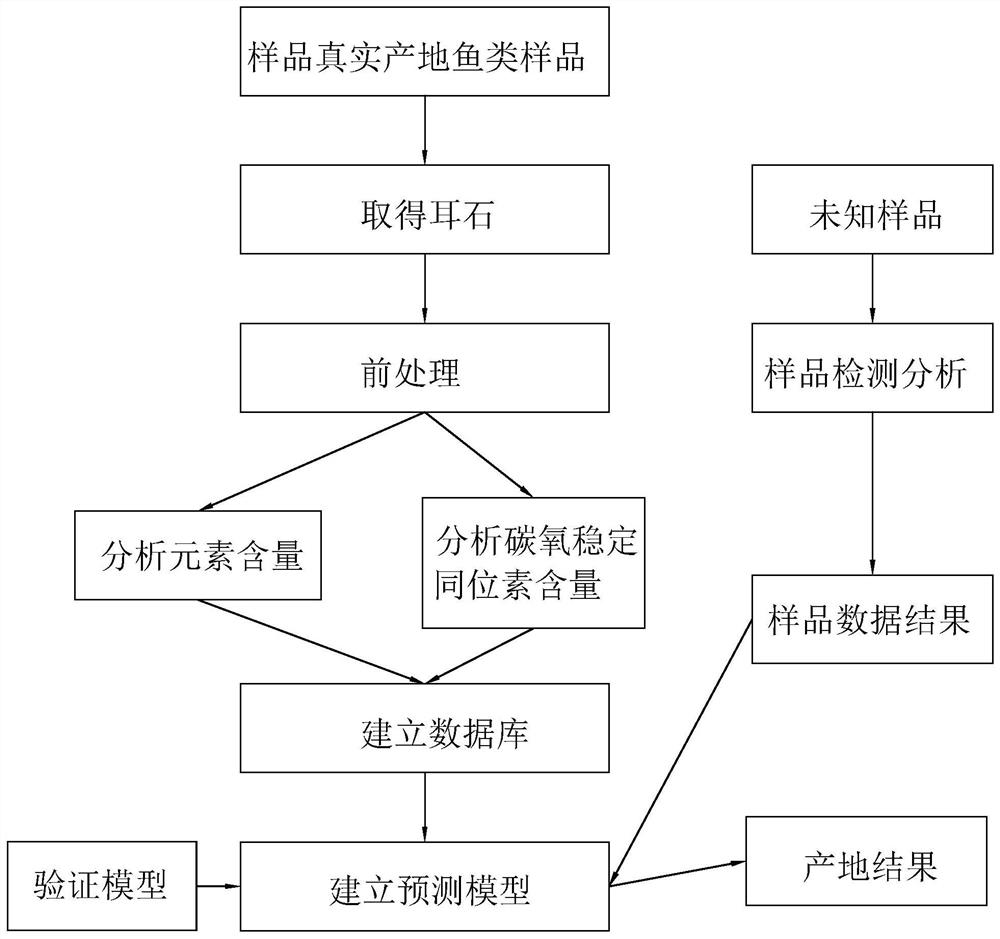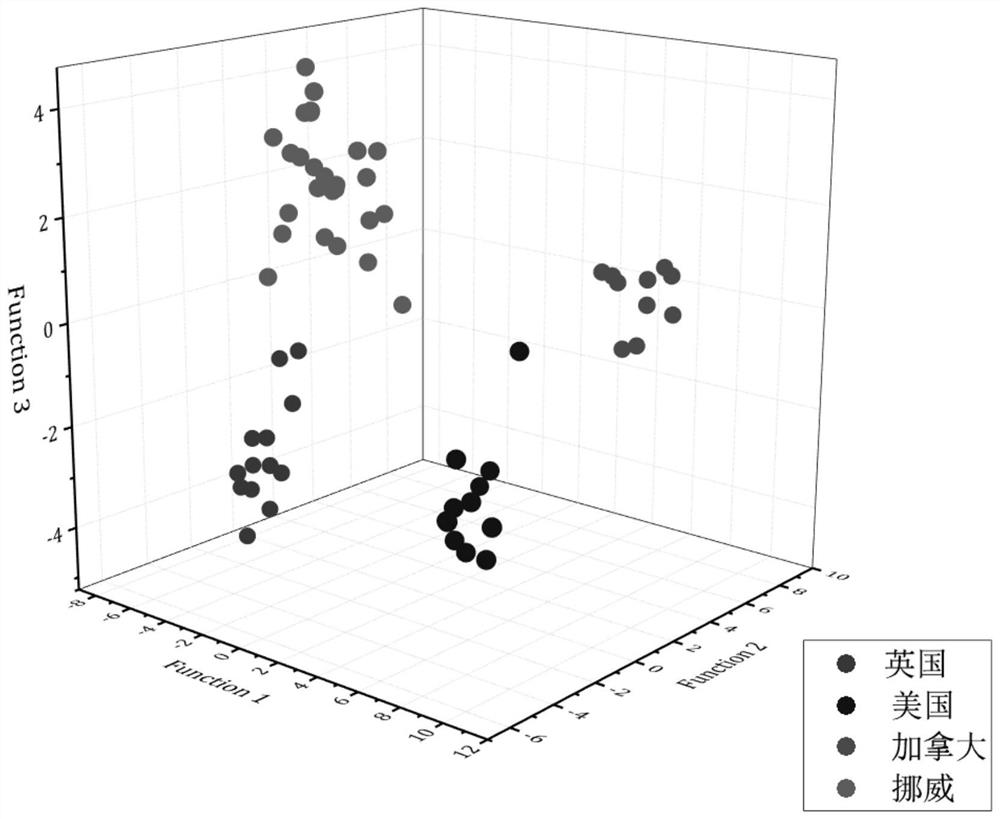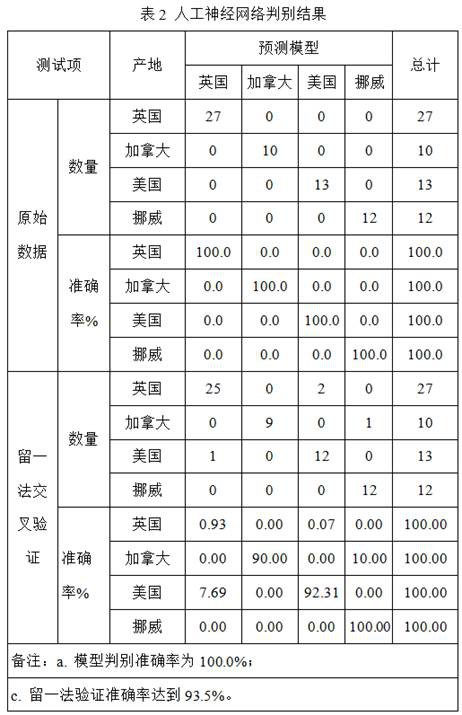Method for identifying fish producing area
A technology of fish and origin, applied in neural learning methods, character and pattern recognition, biological neural network models, etc., can solve problems such as change, difficulty in popularizing fish, difficulty in unifying standard fish representativeness, and improve reliability and accuracy effects
- Summary
- Abstract
- Description
- Claims
- Application Information
AI Technical Summary
Problems solved by technology
Method used
Image
Examples
Embodiment 1
[0107] A method for identifying fish origin, comprising the steps of:
[0108] Collect samples of marine fish from major production areas around the world. In this case, salmon is taken as an example. Salmon is mainly produced in high latitude regions such as Canada, Norway, the United Kingdom, and the United States. Among them, Norway has the largest salmon production, but salmon produced in the waters of Alaska in the United States and the waters of England in the United Kingdom The quality is the best, because salmon living in cold ocean areas have higher fat content, more vitality, and more delicious meat, so the norther the salmon is produced, the better the quality. Collect salmon samples from the above 4 production areas, and collect at least 30 samples from each production area.
[0109] 1. Otolith pretreatment includes the following steps:
[0110] 1. Take a sample from the outer side of the otolith to the center of about 2 / 3 of the fish, wash and dry it, grind it an...
PUM
 Login to View More
Login to View More Abstract
Description
Claims
Application Information
 Login to View More
Login to View More - R&D
- Intellectual Property
- Life Sciences
- Materials
- Tech Scout
- Unparalleled Data Quality
- Higher Quality Content
- 60% Fewer Hallucinations
Browse by: Latest US Patents, China's latest patents, Technical Efficacy Thesaurus, Application Domain, Technology Topic, Popular Technical Reports.
© 2025 PatSnap. All rights reserved.Legal|Privacy policy|Modern Slavery Act Transparency Statement|Sitemap|About US| Contact US: help@patsnap.com



